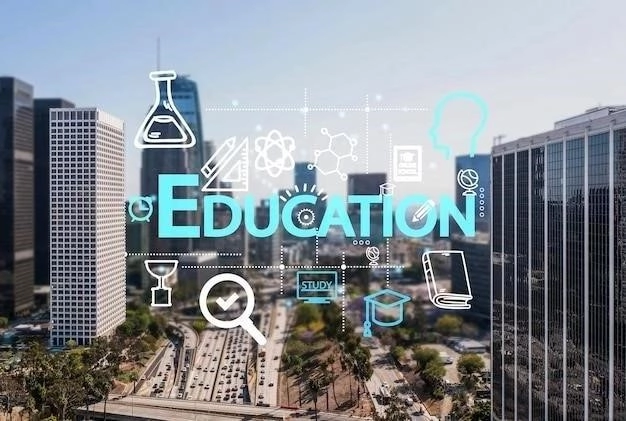Funding and Resource Allocation
A persistent challenge facing the American education system is the significant disparity in funding and resource allocation across schools and districts. This inequity correlates with socioeconomic factors, resulting in inadequate resources for schools in disadvantaged communities. Addressing this requires a multifaceted approach, including equitable funding formulas and targeted investments to bridge the resource gap.

Teacher Shortage and Retention
The American education system is grappling with a pressing challenge: a significant teacher shortage coupled with difficulties in retaining experienced educators. This crisis is multifaceted, stemming from a confluence of factors that make the teaching profession less appealing and contribute to high attrition rates.
One of the most significant factors is the inadequate compensation offered to teachers. Despite the critical role they play in shaping young minds, teacher salaries often lag behind other professions requiring similar levels of education and expertise. This discrepancy in pay can be demoralizing and makes it difficult for educators to make ends meet, particularly in high-cost areas. Furthermore, benefits packages, including healthcare and retirement plans, may not be as competitive as those offered in other sectors, further diminishing the attractiveness of the profession.
Beyond compensation, working conditions contribute significantly to the challenge of teacher retention. Oversized classrooms, often found in underfunded schools, place a significant burden on teachers, hindering their ability to provide individualized attention and support to students. Moreover, the increasing pressure to meet standardized testing benchmarks creates a stressful work environment, forcing teachers to prioritize test preparation over creative and engaging teaching methods. This emphasis on standardized testing can detract from the joy of teaching and limit educators’ ability to foster a love of learning in their students.
Addressing the teacher shortage and retention crisis demands a multi-pronged approach. Competitive salaries and benefits packages are essential for attracting and retaining talented individuals in the education field. Furthermore, improving working conditions by reducing class sizes, providing adequate resources, and creating a supportive and collaborative school environment are crucial for retaining experienced educators. By investing in the well-being and professional development of teachers, the American education system can begin to address this critical challenge and ensure that every student has access to a quality education.

Equity and Access to Quality Education
A cornerstone principle of a just and prosperous society is the guarantee of equitable access to quality education for all its members. However, the American education system continues to grapple with persistent disparities in educational opportunities and outcomes, largely correlating with socioeconomic background, race, and geographic location. This stark reality undermines the potential of countless students and perpetuates a cycle of inequality.
One of the most glaring manifestations of this inequity is the vast difference in resources available to schools in affluent communities compared to those in disadvantaged areas. Schools in low-income neighborhoods often contend with dilapidated facilities, a scarcity of learning materials, and a lack of access to advanced courses and extracurricular programs. This disparity in resources directly impacts the quality of education students receive, limiting their academic growth and future prospects.
Furthermore, the issue of implicit bias within the education system cannot be overlooked. Studies have shown that students from marginalized backgrounds often face lower expectations from educators and are disproportionately subjected to disciplinary measures. Such biases, whether conscious or unconscious, create hostile learning environments and hinder academic achievement.
Addressing this systemic inequity requires a multi-pronged approach that tackles both the symptoms and root causes. Equitable funding formulas, designed to allocate resources based on student needs rather than property taxes, are crucial for leveling the playing field. Moreover, investing in early childhood education programs can mitigate the effects of poverty on educational attainment by providing a strong foundation for future learning. Additionally, implicit bias training for educators is essential to create more inclusive and equitable learning environments for all students.
By acknowledging and actively dismantling these systemic barriers, the American education system can move closer to its promise of providing equal opportunities for all students to succeed, regardless of their background.

Standardized Testing and Curriculum
The role of standardized testing in American education has been a subject of ongoing debate, with proponents arguing for its value in measuring student achievement and holding schools accountable, while critics contend that it narrows curriculum focus and fails to capture the full breadth of student learning. This ongoing debate highlights the need for a nuanced understanding of the benefits and drawbacks of standardized testing in shaping effective educational policies.
One of the primary criticisms leveled at standardized testing is its tendency to narrow the curriculum. When a significant portion of instructional time is dedicated to test preparation, particularly in high-stakes testing environments, it can come at the expense of a more well-rounded curriculum that encompasses critical thinking, creativity, and real-world application. This narrow focus can stifle students’ natural curiosity and love of learning, potentially hindering their overall intellectual development.
Furthermore, standardized tests are often criticized for their inability to accurately measure the full range of skills and knowledge that are essential for success in the 21st century. These tests often prioritize rote memorization and standardized formats, failing to assess critical thinking, problem-solving abilities, and collaborative skills that are increasingly valued in today’s rapidly evolving workforce.
However, standardized testing can also serve as a valuable tool for identifying achievement gaps and holding schools accountable for providing a quality education to all students. By providing comparative data, standardized tests can highlight disparities in educational opportunities and outcomes, prompting targeted interventions and resource allocation to address these inequities.
Moving forward, a balanced approach is needed—one that leverages the insights offered by standardized assessments while embracing more holistic and authentic forms of evaluation that capture the complexities of student learning. This includes incorporating performance-based assessments, portfolio reviews, and student-led projects that allow for deeper learning and demonstrate real-world application of knowledge. By embracing a more comprehensive approach to assessment, the American education system can better prepare students for the challenges and opportunities of the 21st century.

Technological Integration and Digital Literacy
The rapid evolution of technology has ushered in a new era of possibilities for education, offering unprecedented opportunities for personalized learning, expanded access to information, and the development of essential digital literacy skills. However, effectively integrating technology into the American education system presents both exciting opportunities and complex challenges that require careful consideration and strategic planning.
One of the most significant challenges lies in bridging the digital divide. While access to technology has increased significantly in recent years, disparities persist along socioeconomic lines, with students from low-income families often lacking reliable internet access and personal devices at home. This digital divide can exacerbate existing educational inequities, hindering access to online learning resources, digital textbooks, and other technology-based learning tools.
Beyond access, ensuring that all students possess the necessary digital literacy skills to thrive in an increasingly digital world is paramount. This encompasses not only basic computer skills but also critical thinking, information literacy, and responsible online behavior. Equipping students with these skills is essential for their academic success, future employment prospects, and informed participation in a democratic society.
However, the integration of technology into education should not be viewed as a mere substitution for traditional teaching methods. Effective technology integration requires a thoughtful pedagogical approach that leverages digital tools to enhance and transform learning experiences. This includes providing educators with the necessary professional development opportunities to confidently navigate and effectively integrate technology into their teaching practices.
By addressing these challenges and embracing a strategic approach to technology integration, the American education system can harness the transformative power of technology to create more engaging, personalized, and equitable learning experiences for all students, preparing them for success in the 21st century.

College Affordability and Student Debt
The rising cost of higher education in the United States has become a pressing societal concern, placing a significant financial burden on students and their families while raising questions about the accessibility of the American dream for future generations. Skyrocketing tuition fees, coupled with stagnant wage growth, have made college increasingly unaffordable for many, leading to a burgeoning student debt crisis that has far-reaching economic and social implications.
The soaring cost of tuition can be attributed to a complex interplay of factors, including decreased state funding for public universities, increased demand for higher education, and rising administrative costs. As states grapple with budget constraints, public universities have been forced to offset funding shortfalls by increasing tuition, making college less affordable for students, particularly those from low- and middle-income backgrounds.
This affordability crisis has led to a surge in student loan debt, which has now surpassed $1.7 trillion nationally. Graduating with a significant debt burden can have long-term consequences for students, impacting their ability to purchase homes, start businesses, and save for retirement. Furthermore, the burden of student loan debt can disproportionately impact students from marginalized backgrounds, who often lack the generational wealth to afford college without relying heavily on loans.
Addressing this complex challenge requires a multifaceted approach that includes increasing state investment in public higher education, exploring innovative cost-saving measures, and expanding need-based financial aid opportunities. Making college more affordable is not only essential for individual economic mobility but also for the nation’s economic competitiveness in the global marketplace, as a highly educated workforce is crucial for innovation and growth.

Mental Health and Well-being
In recent years, there has been a growing recognition of the crucial role that mental health and well-being play in academic success and overall life outcomes. Students today face a myriad of pressures, from academic expectations and social media comparisons to concerns about climate change and economic uncertainty. These pressures can take a toll on students’ mental health, impacting their ability to learn, form healthy relationships, and reach their full potential.
Statistics paint a concerning picture of the state of youth mental health in America. Rates of anxiety, depression, and suicidal ideation among young people have been on the rise, underscoring the urgent need for increased attention and resources dedicated to addressing this growing crisis within the education system.
Schools are uniquely positioned to play a vital role in promoting mental health and well-being. Creating supportive school environments that foster a sense of belonging, connection, and resilience is essential for buffering the effects of stress and promoting positive mental health outcomes. This includes fostering a positive school climate that celebrates diversity, promotes inclusivity, and addresses issues of bullying and discrimination.
Moreover, providing access to mental health services within schools is crucial for early identification and intervention. Trained school counselors, psychologists, and social workers can provide students with the support they need to navigate challenges, develop coping mechanisms, and thrive both academically and personally. However, many schools face a shortage of qualified mental health professionals, limiting their ability to adequately address the growing demand for these services.
Prioritizing mental health and well-being within the American education system is not only a matter of student well-being but also a critical investment in the future of our society. By creating supportive learning environments and providing access to mental health services, we empower students to develop the resilience, coping skills, and emotional intelligence they need to navigate the challenges of the 21st century and lead healthy, fulfilling lives.

Parental and Community Involvement
A robust and thriving education system relies not solely on the efforts of educators and policymakers but also on the active engagement of parents, families, and the broader community. Recognizing that education is a shared responsibility, fostering strong partnerships among these stakeholders is essential for creating a supportive and enriching learning environment where all students can thrive.
Parental involvement, in particular, has been consistently linked to positive educational outcomes. Students whose parents are actively engaged in their education tend to perform better academically, exhibit more positive behaviors, and demonstrate greater social-emotional well-being. This involvement can take various forms, from attending school events and communicating regularly with teachers to providing a supportive home learning environment and advocating for their children’s educational needs.
Beyond the home, engaging the broader community as partners in education can provide invaluable resources and support. Businesses can offer mentorship opportunities, internships, and job shadowing experiences that expose students to real-world applications of their learning. Community organizations can provide after-school programs, tutoring services, and enrichment activities that supplement classroom learning.
However, creating meaningful partnerships requires overcoming barriers such as time constraints, cultural differences, and a lack of trust between families and schools. Schools must prioritize building strong relationships with parents and community members, establishing clear communication channels, and creating welcoming and inclusive environments that value diverse perspectives. When schools, families, and communities work together, they create a powerful synergy that benefits all students, fostering a love of learning and preparing them for success in school, work, and life.










